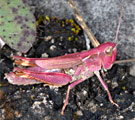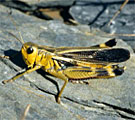Ephippiger ephippiger (Fiebig, 1784)
![Ephippiger ephippiger: Female (Northern Greece, Serres, late July 2012) [N] Ephippiger ephippiger: Female (Northern Greece, Serres, late July 2012) [N]](thumbs/tettigoniidae/ephippiger_w2012.jpg)
![Ephippiger ephippiger: Female (Northern Greece, Serres, late July 2012) [N] Ephippiger ephippiger: Female (Northern Greece, Serres, late July 2012) [N]](thumbs/tettigoniidae/ephippiger_8w2012.jpg)
![Ephippiger ephippiger: Female (SW-Bulgaria, Belasica Mountain ner Petrich, 1700m, August 2017) [N] Ephippiger ephippiger: Female (SW-Bulgaria, Belasica Mountain ner Petrich, 1700m, August 2017) [N]](thumbs/tettigoniidae/ephippiger_im2017.jpg)
![Ephippiger ephippiger: Male (Serres, Northern Greece, late July 2012) [N] Ephippiger ephippiger: Male (Serres, Northern Greece, late July 2012) [N]](thumbs/tettigoniidae/ephippiger_4m2012.jpg)
![Ephippiger ephippiger: Male (Serres, Northern Greece, late July 2012) [N] Ephippiger ephippiger: Male (Serres, Northern Greece, late July 2012) [N]](thumbs/tettigoniidae/ephippiger_5m2012.jpg)
![Ephippiger ephippiger: Female larva (Bulgaria, Bansko, late July 2013) [N] Ephippiger ephippiger: Female larva (Bulgaria, Bansko, late July 2013) [N]](thumbs/tettigoniidae/ephippiger_im2013.jpg)
![Ephippiger ephippiger: Large female larva (Bulgaria, Bansko, late July 2013) [N] Ephippiger ephippiger: Large female larva (Bulgaria, Bansko, late July 2013) [N]](thumbs/tettigoniidae/ephippiger_2im2013.jpg)
![Ephippiger ephippiger: Habitat in Northern Greece (Serres, late July 2012) [N] Ephippiger ephippiger: Habitat in Northern Greece (Serres, late July 2012) [N]](thumbs/tettigoniidae/ephippiger_h2012.jpg)
![Ephippiger ephippiger: Habitat (SW-Bulgaria, Belasica Mountain ner Petrich, 1700m, August 2017) [N] Ephippiger ephippiger: Habitat (SW-Bulgaria, Belasica Mountain ner Petrich, 1700m, August 2017) [N]](thumbs/tettigoniidae/ephippiger_h2017.jpg)
![Ephippiger ephippiger: Habitat in N-Greece in July 2012 [N] Ephippiger ephippiger: Habitat in N-Greece in July 2012 [N]](thumbs/tettigoniidae/ephippiger_grh2012.jpg)
Nutrition:
Plants and small animals (insects).
Habitat:
Ephippiger ephippiger occurs in vertically well structured, xerothermous habitats such as fallow vineyards, dry, shrub-rich, steppe-like grasslands, bright white oak woodlands(Quercus pubescens), edges etc. The insects are oriented vertically and are often found on bushes.
Life cycle:
The adults are found from July to October. The eggs overwinter in moss and earth, according to literature several times.
Endangerment: threatened with extinction
Endangerment factors:
Ephippiger ephippiger occurs from E-Austria and S-Czech Republic to N-Greece and Ukraine. The western taxon diurnus is today considered a distinct species. Subspecies status would be appropriate, too.
Ephippiger cavannai | Ephippiger cunii | Ephippiger discoidalis | Ephippiger diurnus | Ephippiger melisi | Ephippiger persicarius | Ephippiger ruffoi | Ephippiger terrestris


